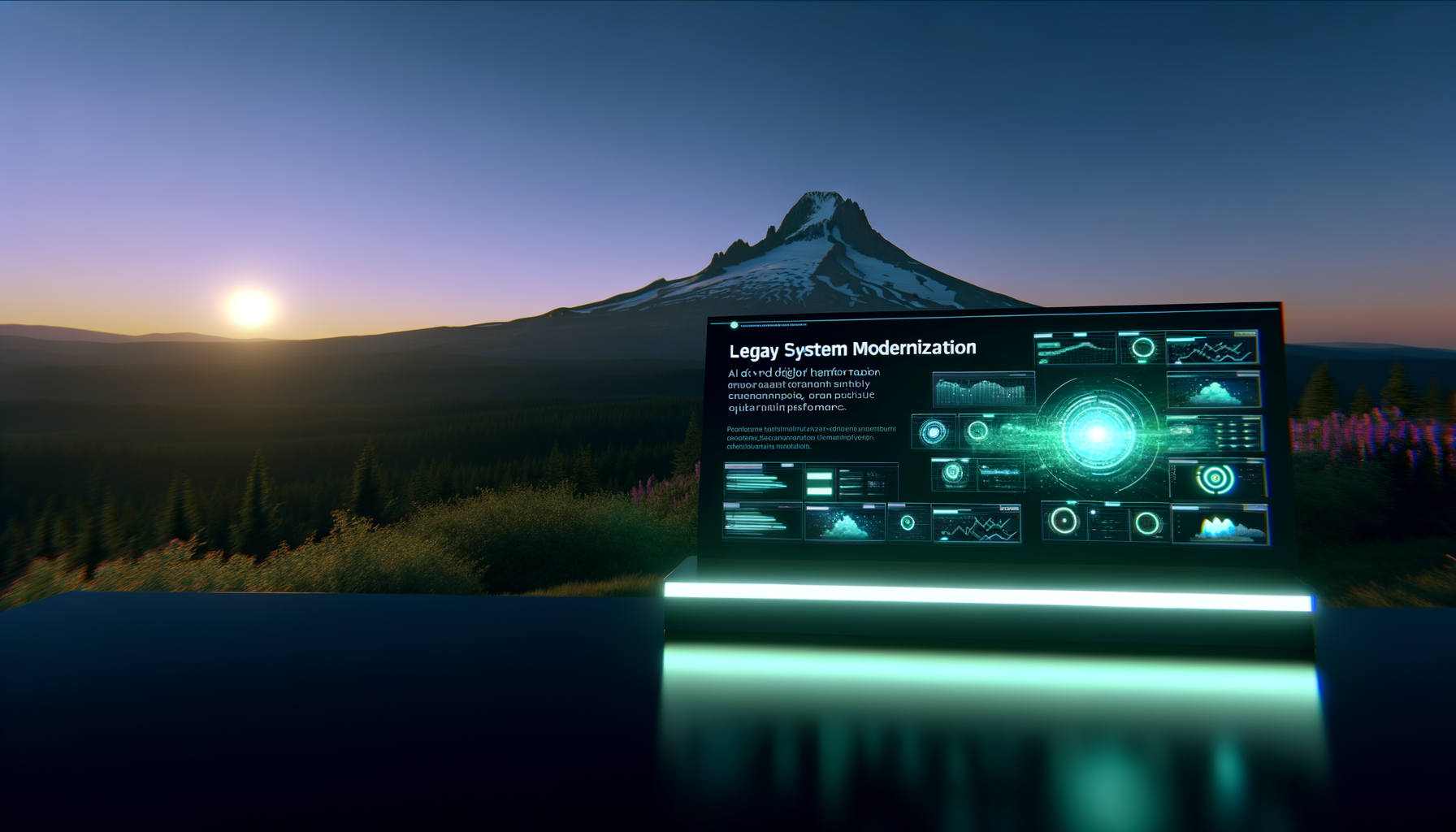Have you ever wondered if your legacy systems are holding back your organization's potential? In 2025, over 90% of enterprises will face challenges due to outdated infrastructure. This guide offers actionable insights for CTOs, CIOs, and technical founders, showing how legacy application modernization can revolutionize your ROI and drive innovation.
Understanding Legacy System Modernization
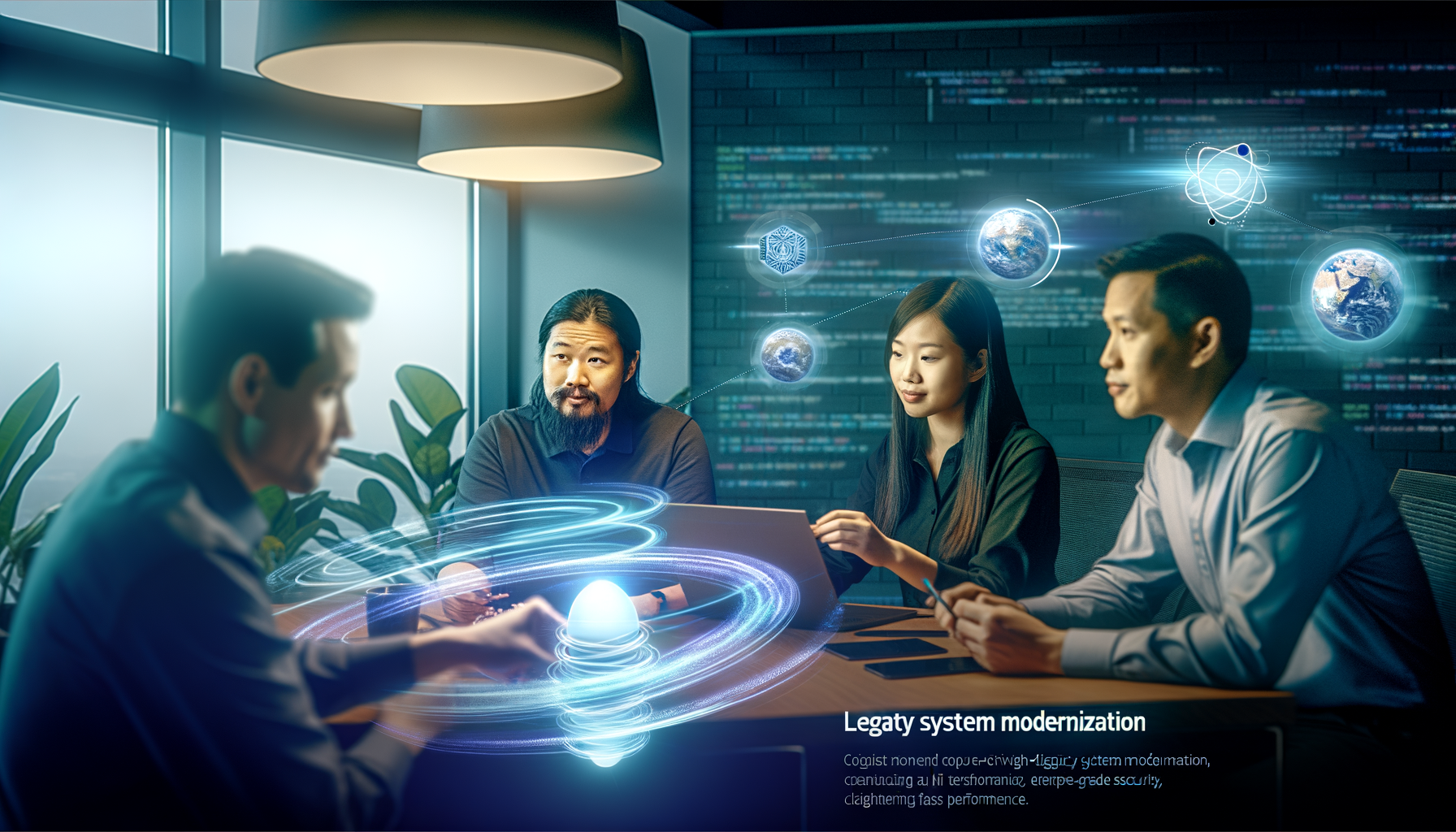
Code-review collaboration session with diverse team.
Legacy system modernization refers to the process of updating and transforming outdated IT systems, applications, and processes. It's like trading in your vintage car for a state-of-the-art electric vehicle—both serve the same purpose but offer vastly different experiences.
The key to successful modernization is balancing technical debt remediation with business goals. Quicklook's approach emphasizes aligning technology with long-term strategic objectives, ensuring seamless transitions.
From monolith to microservices, this transformation process includes adopting cloud-native architectures, enhancing security, and improving scalability. The goal is to create a future-proof IT environment that can adapt and grow with your business needs.
CALLOUT
Modernizing isn't just a tech update; it's a business evolution.
Benefits of Modernizing Legacy Applications

Up-trending analytics graph showing benefits of modernization.
Modernizing legacy applications isn't just about technology—it's about business transformation. Companies report a 40% reduction in operational costs post-modernization, as per a 2023 Gartner study.
Notably, shifting from mainframe to microservices architectures enhances agility, enabling faster time-to-market for new features and products. This agility is crucial in today's fast-paced business environment.
Moreover, modernized systems often come with improved security features, reducing vulnerabilities and protecting against cyber threats. This evolution ensures compliance with regulatory standards and fosters trust with stakeholders.
LIST
- •Reduced Costs
- •Increased Agility
- •Enhanced Security
AI and Machine Learning in Legacy Modernization
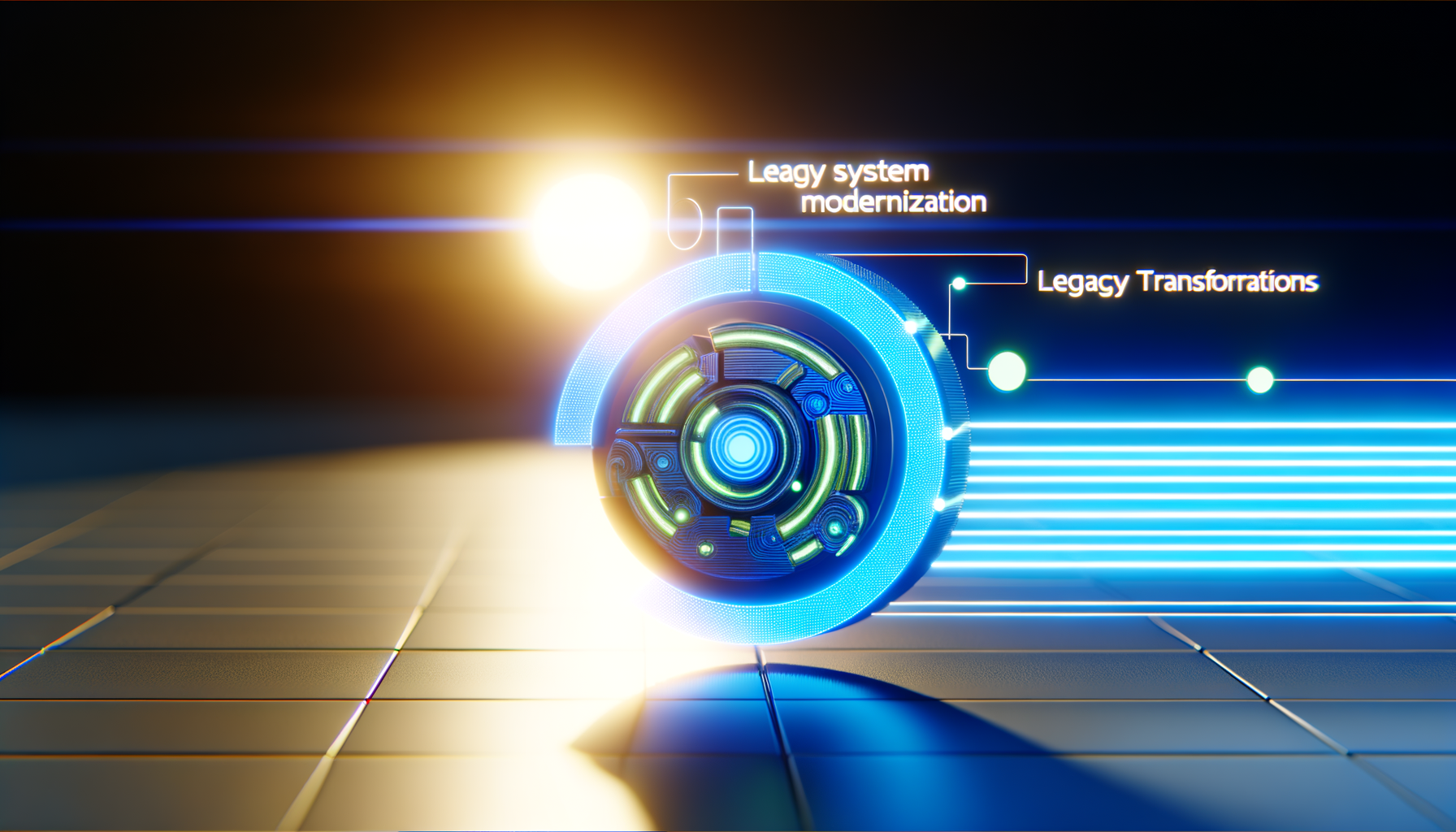
Diagram of AI integration in legacy systems.
Artificial intelligence (AI) and machine learning (ML) are transforming legacy modernization processes by automating complex tasks and uncovering new insights from data.
AI-driven modernization enables predictive maintenance, identifies bottlenecks, and optimizes performance. It's like having a digital Swiss Army knife for your IT infrastructure.
Integrating AI into your legacy systems can lead to smarter decision-making and more efficient operations, ultimately driving greater ROI.
QUOTE
AI is not just a tool; it's the engine that drives modernization forward.
Cloud-Native Architecture: The Game-Changer
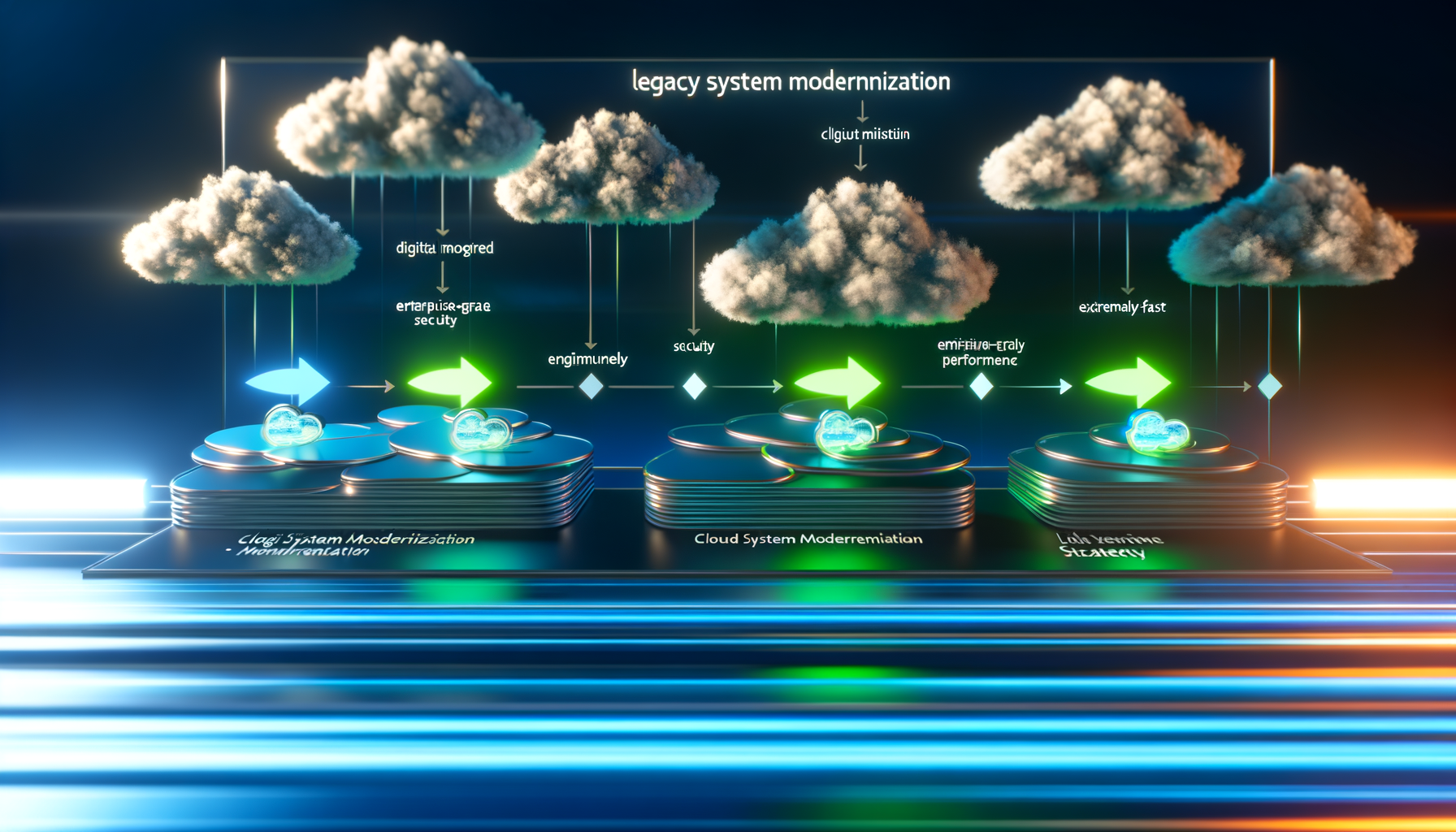
Cloud migration strategy diagram with step-by-step phases.
Adopting cloud-native architectures is pivotal in the journey from legacy to modern systems. It's akin to moving from a cramped city apartment to a spacious home that grows with your family.
Cloud-native solutions provide unmatched flexibility and scalability, allowing enterprises to deploy applications across multiple environments seamlessly.
A robust cloud migration strategy involves careful planning and execution, ensuring that your systems are not only modernized but future-proofed.
CALLOUT
Cloud-native isn't just scalable; it's transformative.
Practical Steps to Modernize Your Legacy Systems
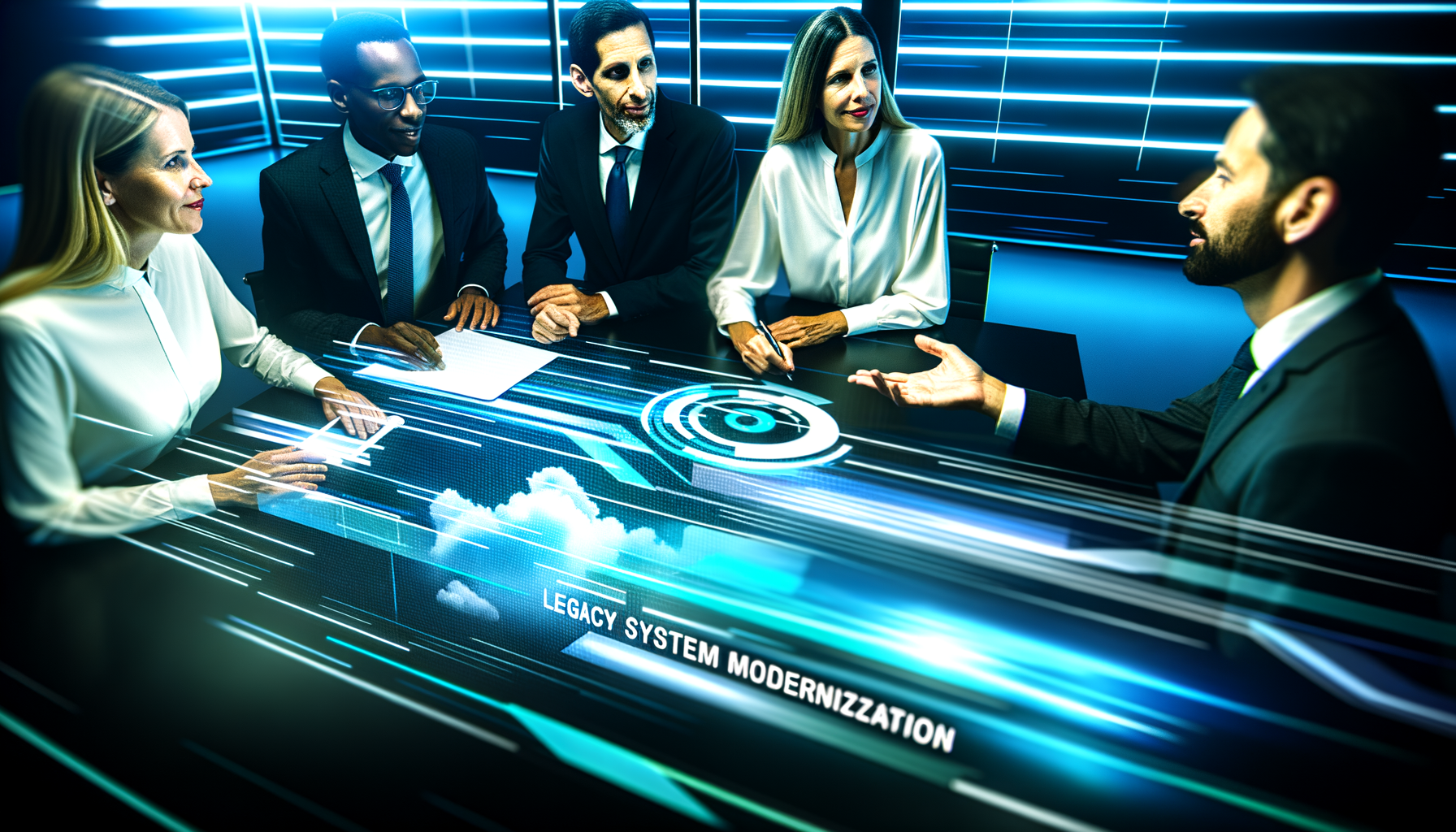
Team planning practical steps for system modernization.
Embarking on a modernization journey can be daunting, but breaking it down into actionable steps makes it manageable. Start with a comprehensive assessment of your current systems.
Next, prioritize applications that are mission-critical and have the greatest business impact. Consider adopting low-code development platforms to accelerate the modernization process.
Regular reviews and updates are essential, ensuring that your systems evolve with technological advancements and changing business needs.
LIST
- •Assess Current Systems
- •Prioritize Key Applications
- •Adopt Low-Code Platforms
Frequently Asked Questions
QWhat are the key benefits of modernizing legacy applications in 2025?
QHow can AI and machine learning accelerate legacy system modernization?
QWhat role does cloud-native architecture play in updating legacy systems?
Conclusion
Modernizing legacy systems is not just about upgrading technology; it's about transforming business operations and unlocking potential.
Future Vision
Embracing modern solutions today prepares your organization for tomorrow's challenges.
Schedule your AI audit with Quicklook.
